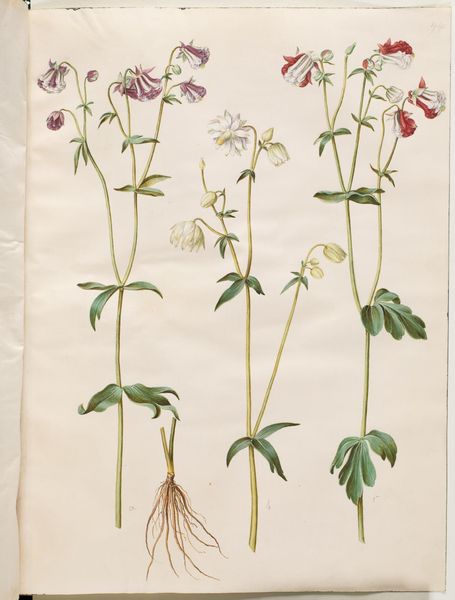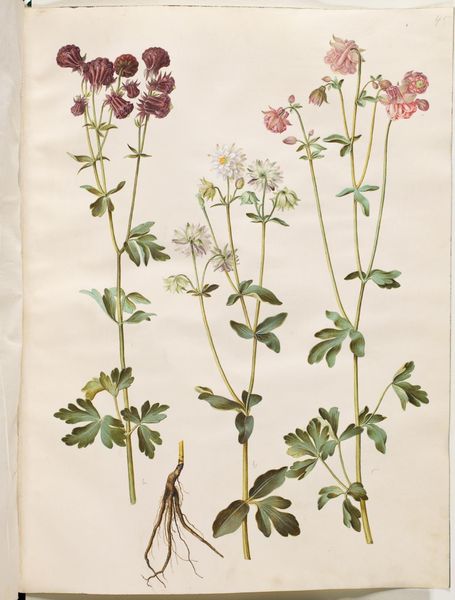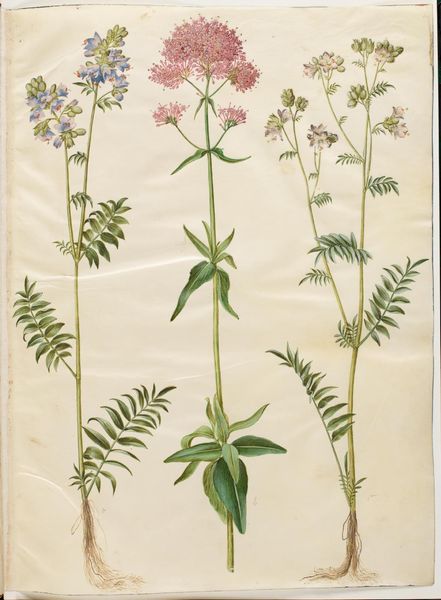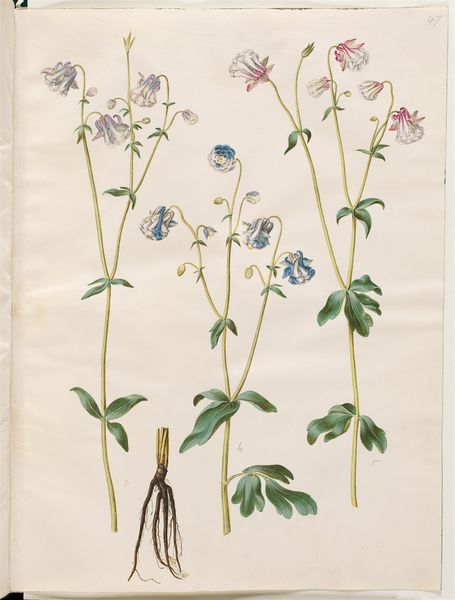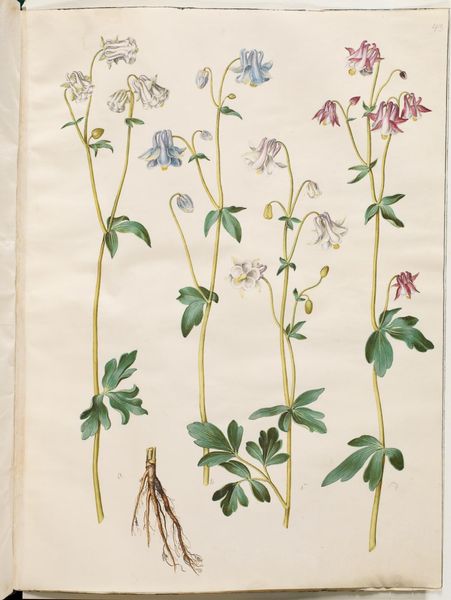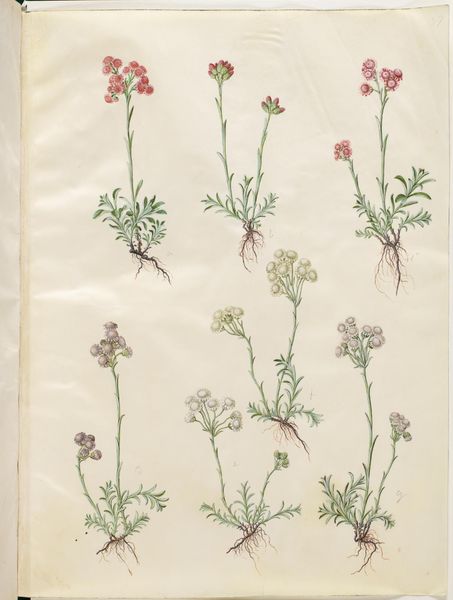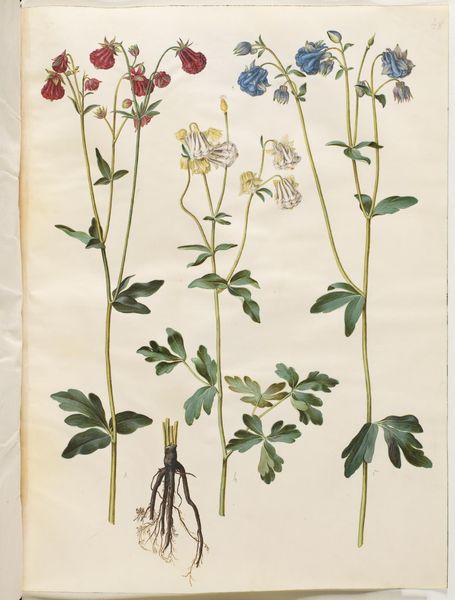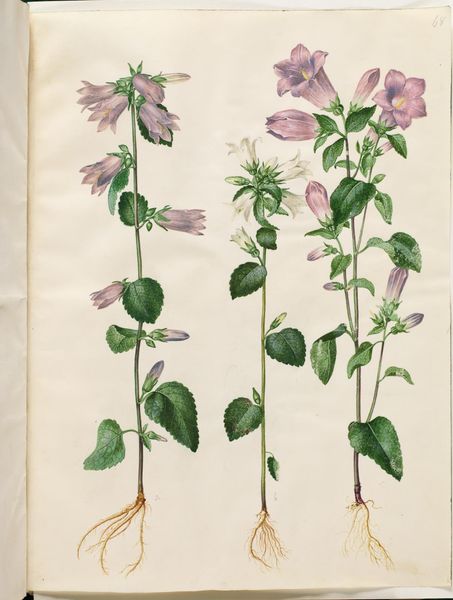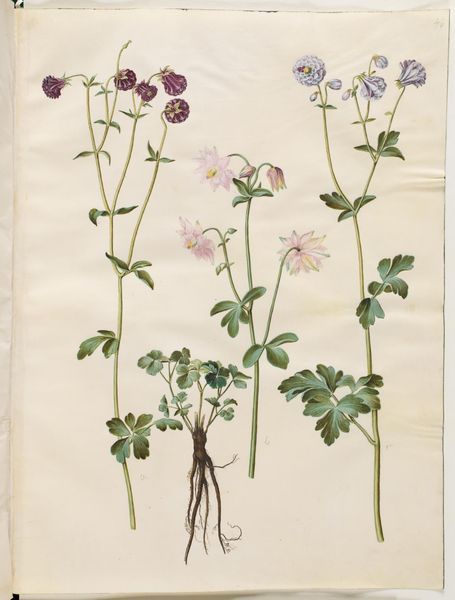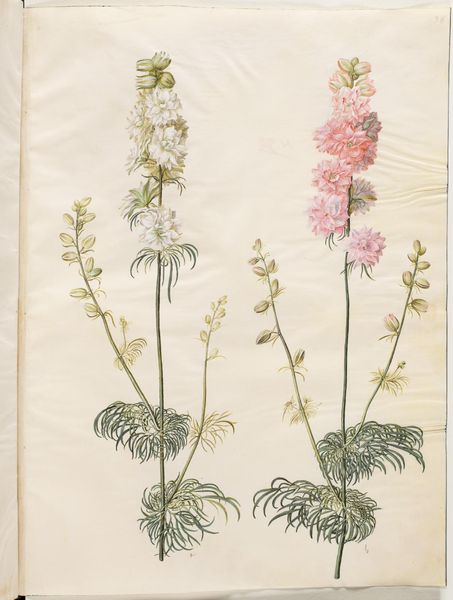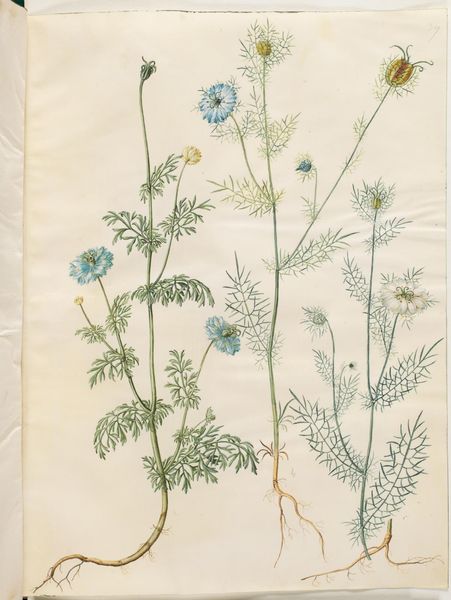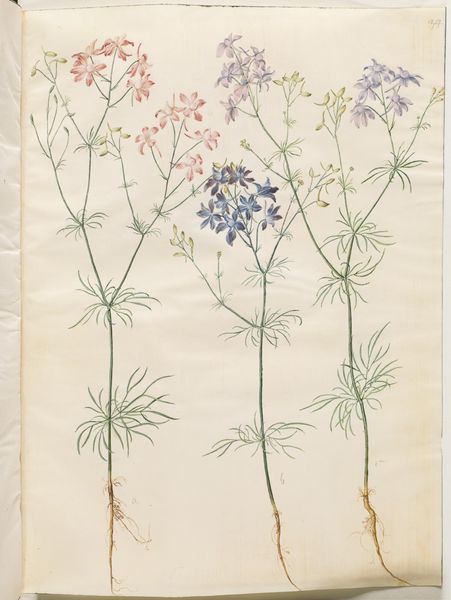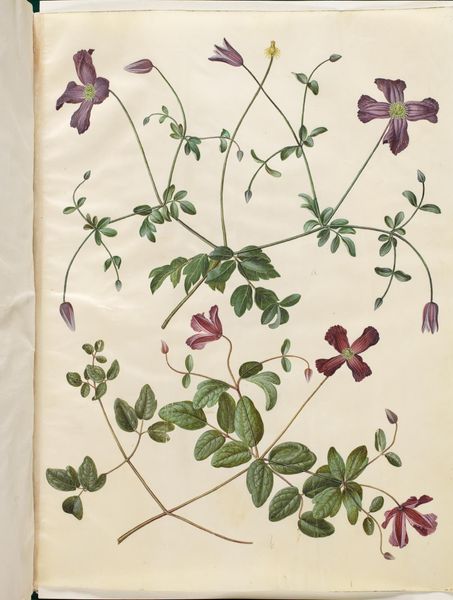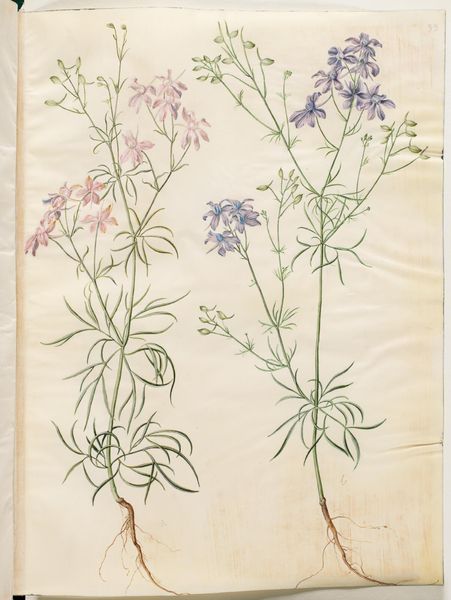
Aquilegia vulgaris (almindelig akeleje) 1649 - 1659
0:00
0:00
drawing, gouache, watercolor
#
drawing
#
water colours
#
baroque
#
gouache
#
watercolor
#
watercolour illustration
#
botanical art
Dimensions: 505 mm (height) x 385 mm (width) (bladmaal)
Curator: Good morning. We’re standing before Hans Simon Holtzbecker’s “Aquilegia vulgaris (almindelig akeleje),” made between 1649 and 1659. It’s a watercolour, gouache and drawing currently housed here at the SMK, Statens Museum for Kunst. Editor: It’s just so delicately rendered, isn’t it? Such airy lightness. I can almost smell the earthy fragrance of damp soil and springtime blooms looking at it. There is something innocent and ephemeral to it, the colors are like a faded dream. Curator: Indeed. Holtzbecker was a botanical artist deeply embedded in the scientific culture of his time. He served various royal courts, documenting the flora with exacting detail, almost as a scientific record of botanical species, intended for study as much as enjoyment. Editor: So, not just some pretty picture, but like, hardcore science disguised as floral arrangement? Curator: Exactly. Think of it as visual data collection from an era when painting was a key method of documenting the natural world for the public sphere and aristocracy, especially within burgeoning natural history cabinets. But it does have symbolic dimensions too, in baroque society flowers and plants were rich in allusions and metaphorical implications regarding social norms, religious morality or status displays. Editor: Right, the old "say it with flowers" gig, but, like, with hidden messages. This flower, though... the Columbine, right? Seems almost melancholy, pensive. I am drawn to its almost spiritual delicacy; the colors make you feel how fragile these gorgeous natural wonders really are and our relation to them. Curator: Perhaps Holtzbecker chose this particular flower because it embodies multiple, often conflicting meanings in contemporary and subsequent symbol systems, or simply for its aesthetic properties, though this reading might contradict historical interpretations… The precise intentions are difficult to unearth definitively. The lack of documentation of his motivation perhaps leaves open new readings and feeling, however… Editor: Precisely! The open wound of interpretation, haha! But there’s so much… possibility for dialogue… even if there's a little darkness, in this art’s very detailed portrayal. Curator: That dialectical exchange with images—isn't that the magic of museums, when history opens itself to individual perception, when science speaks softly to personal experience, don't you agree?
Comments
No comments
Be the first to comment and join the conversation on the ultimate creative platform.
